6月 182012
日本では高額所得者?のコメディアンの母親が、生活保護を受給していたことが大きな社会問題として取り上げられている。たしかに2011年、11月時点で生活保護受給者の数が200万人を超えてしまったのも事実である。しかし、こんなことはどう考えても大きな問題ではない。この場合は、おそらく、不正受給ではないが、戦後、家族制度や日本の伝統を否定しておいて意図的にこの騒ぎを起こしている人たちの狙いはどこにあるのだろうか。
冷静に考えてみる必要がある。おそらく、現在の消費税と同じく、財務省サイドの話であろう。不正受給を本当になくしたかったら、歳入庁をつくって社会保険と税金を一括管理すればいいというストリーをつくりたいのであろう。これは、資産家が嫌う国民総背番号制に繋がる話である。財務省出身の片山さつき議員が大きな声をこの問題であげているのも宜なるかなである。
現在の我々が注目すべきは、日本を戦争で負かしてから、日本の安全を保障するというスタンスを表向きとり続けている同盟国である米国の現実である。
そのアメリカで、日本の生活保護にあたるフードスタンプ受給者の数が、7,000万人をついに超えたようである。ところで、米国の人口が今、どれだけかご存じだろうか。約3億1千万人である。7,000万人という数字は、総人口の20%を優に超える驚くべき数字である。
このような内情を抱える国が、日本をただで守ってくれるはずもないし、本当に対等な自由貿易をしてくれるはずもないのである。普通に考えれば誰でもわかることである。
フランスの碩学、エマニュエル・トッド氏がその著書で何回も指摘しているようにアメリカの乳幼児死亡率は、先進国としては異常な高さの1,000人当たりの死亡率は6~7を維持している。日本は、その半分の2~3である。ニクソンショック、オイル危機以来、米国という国は、人様から借金したお金で世界一の軍事力を維持し、その軍事力を背景に政治力を発揮しているきわめて異常な形の国なのである。決して日本が見習うような国ではない。
少々古いが、アメリカの現状を分かりやすく解説しているので、日経ビジネスから一部引用させていただく。
(*日経ビジネス 2011年10月3日(月)より (引用はじめ))
「貧困層のフードスタンプに群がる米国外食産業 景気後退の足音に身構える米国民」
米国では家計所得の低下から、2010年の貧困率が17年ぶりの高水準に達した。景気低迷の影響が長引き、失業率も9%台と高止まりしたまま厳しい台所事情を抱える米国民。そんななか、教育費や医療費は軒並み上昇を続けており、米国民は今後一層厳しいやりくりを強いられそうだ。
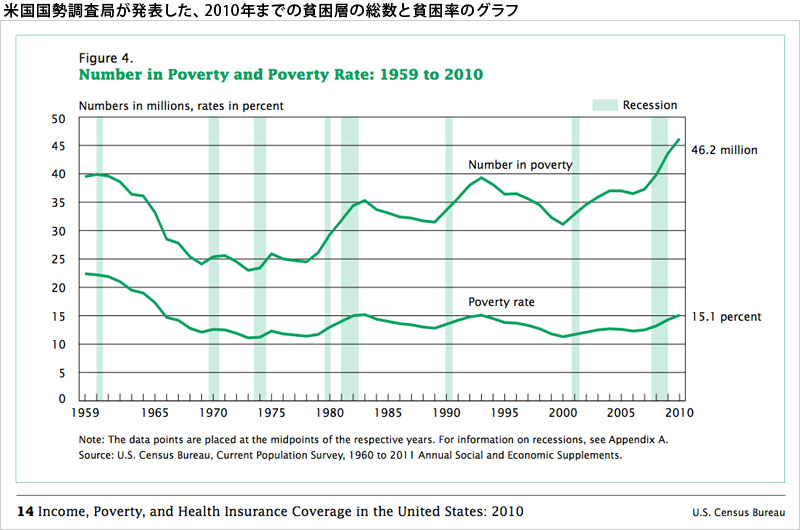
9月13日に米国国勢調査局が発表した数字は、米国民に衝撃を与えた。2010年時点で連邦政府が定める貧困ライン(4人家族で所得が2万2314ドル以下、1ドル77円計算で約170万円)を下回る生活を送る人の割合は09年から0.8ポイント増加し、15.1%になった。これは93年以来、最悪の数字となる。貧困層に属する人は、前年の4360万人から4620万人へと増加しており、52年間に渡る統計調査の歴史で過去最多数となった。景気低迷が長引くなかで、中間層が貧困層へと没落していく事実を突きつけられたかたちだ。
貧困人口の割合は、6人に1人に迫る勢いだが、人種別の格差も目立つ。黒人の貧困率が27.4%と突出しており、その後ヒスパニックが26.6%と続いている。つまり黒人とヒスパニック系は4人に1人以上という高い割合で貧困に属していることになる。
貧困層が拡大しただけでなく、平均的な国民の生活が地盤沈下していく姿も浮かび上がる。2010年の世帯年収の中央値(インフレ調整後)は、4万9445ドル(約380万円)と、2009年から2.3%減少。60年代後半から開始された世帯年収中央値の値をグラフを見てみると、徐々に上昇してきた世帯年収の中央値は1999年にピークをつけ、そこから2010年までに7%も減少している。世帯年収の中央値の減少は、10年以上も続いていることになる。
連邦政府が支給するフードスタンプ(低所得者層向けの食料配給カード)の受給者は、ここ一年で12%増、2年前に比べると30%も増えている。貧困ラインの生活を強いられた国民は、社会保障によってようやく生活成り立たせているような状況だ。現在フードスタンプは、スーパーマーケットなどで野菜や飲み物、パンといった調理前の食品に利用できるようになっている。しかし、利用者の急拡大が起こったことにより、マクドナルドやピザ屋など、ファーストフード店舗もプログラム参入を狙う動きを見せる。お金に困窮する低所得者が持つフードスタンプ市場は、今やシェア争いが繰り広げられる成長分野なのだ。(引用終わり)
それでは、映像でアメリカ社会の現状を確認していただきたい。日本のマスコミではまず、報道されることはないので、驚かれる方もいるかもしれない。ビジネスインサイダーのロバートジョンソンという記者の書いたものだ。
http://www.businessinsider.com/lakewood-new-jersey-homeless-tent-city-2011-9?op=1より
AMERICA TODAY: Heartbreaking Pictures From New Jersey’s Homeless ‘Tent City’
Robert Johnson | Sep. 8, 2011
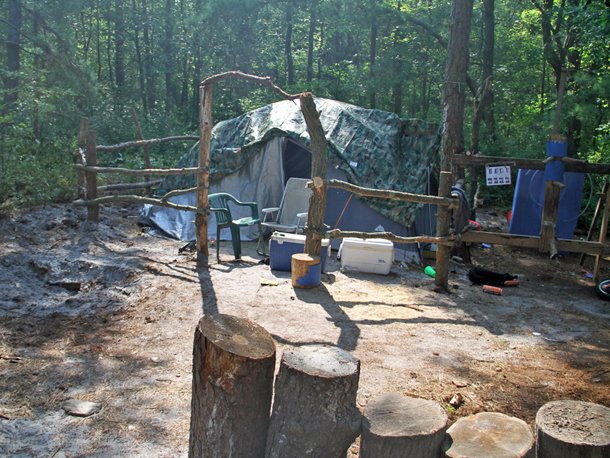
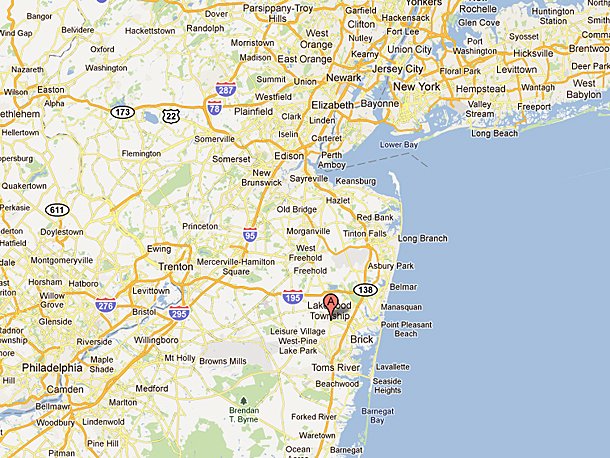
Doug Hardman wakes up every morning with a song in his head—a vague memory of his days on stage.
Inside his tepee in the woods outside Lakewood, NJ, at the homeless Tent City, the roosters wake early and the mornings are already cooler. A musician who lost his Florida home in the housing crisis, Hardman says he floats in and out of Tent City, that he’s proud of his kids, and misses the life he no longer has.
He has a lot of company out here.
Tent City made the news recently and while community leader Steven Brigham says the media attention brought in greater donations, it also brought unwanted attention from the local politicians.
After battling with the city for years to have access to the public land here, Brigham found a New Jersey lawyer to represent his case pro bono.
The attorney, Jeff Wild, argued that the homeless population are part of the public and should therefore have access to public lands. Rather than take the case to court, Lakewood City Council settled, and Brigham signed an agreement to put up no more shelters and allow no more than 70 people to stay.
But last winter the community put up three wooden structures to house everyone and keep them warm.
“We didn’t lose anybody last year,” Brigham says, “and nobody got sick.”
This year could be different. After City Council members saw the shelters on TV, they sent demolition crews in. The walls were torn down around whatever was inside, and meager furnishings were left to the elements.
This year, the tent city’s residents will have to put wood-stoves in tents and plastic shanties, increasing fire risk. Brigham says the town is making it impossible to survive there, hoping to get the homeless out, and he’s concerned it will end up killing people this year.
More than 700,000 people are currently homeless in the U.S. and the number has grown 20 percent from 2007 to 2010.
A recent UN report says the way the U.S. denies its citizens access to water, basic sanitation, and criminalizes homelessness is a violation of the Universal Declaration of Human Rights and the International Covenant on Economic, Social and Cultural Rights.
Brigham can relate. He started the camp five years ago and more people show up every year. Some stay, some find part-time work where they can, move on, and wind up coming back.
“There’s a real glut of low-skilled manual labor in the area,” he says. “There’s just nothing for people to do.”
Brigham works as a high-voltage electrical contractor on the bridges and tunnels around New York, but his mission is here in the Lakewood forest.
“I found this spot that had no underbrush, which is very unusual,” he says, “and this community’s become a living protest.”
I ask him what he means, and he says, “We’re protesting the insincerity of the political system. It’s supposed to be for the people and its not.”
(Reverend Steve Brigham can be reached at P.O. Box 326, Lakewood, NJ 08701)
Outside the town of Lakewood New Jersey, across from this intersection..
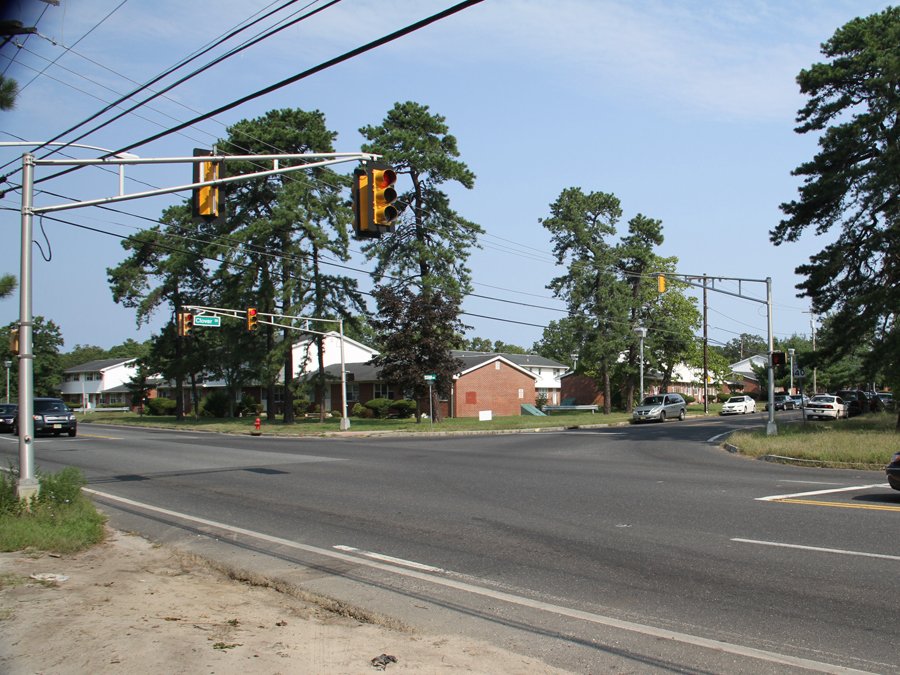
70 people live at this homeless camp in the woods
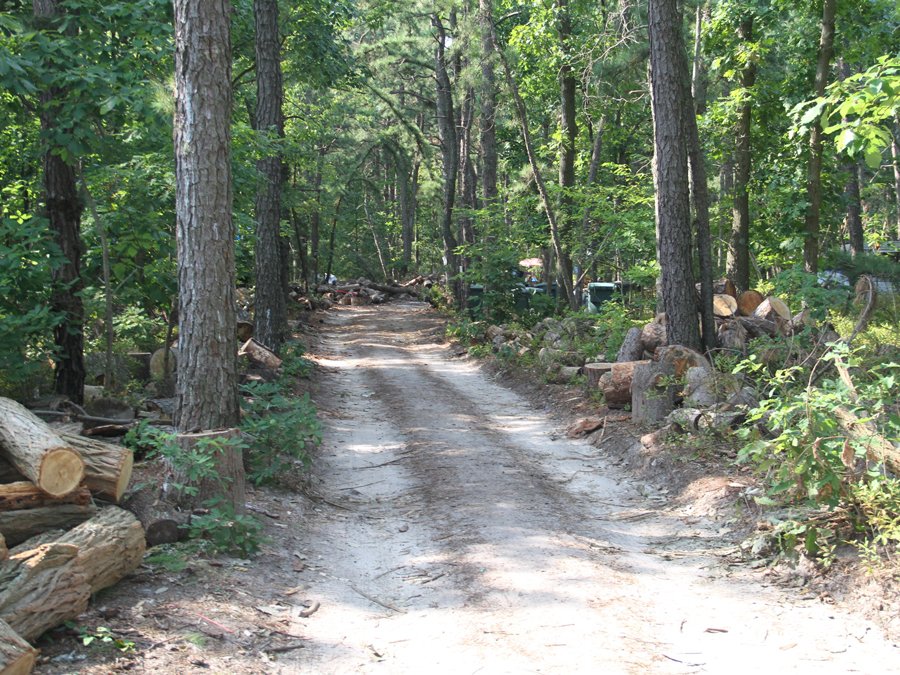
Some people have lived here for years and consider it their home
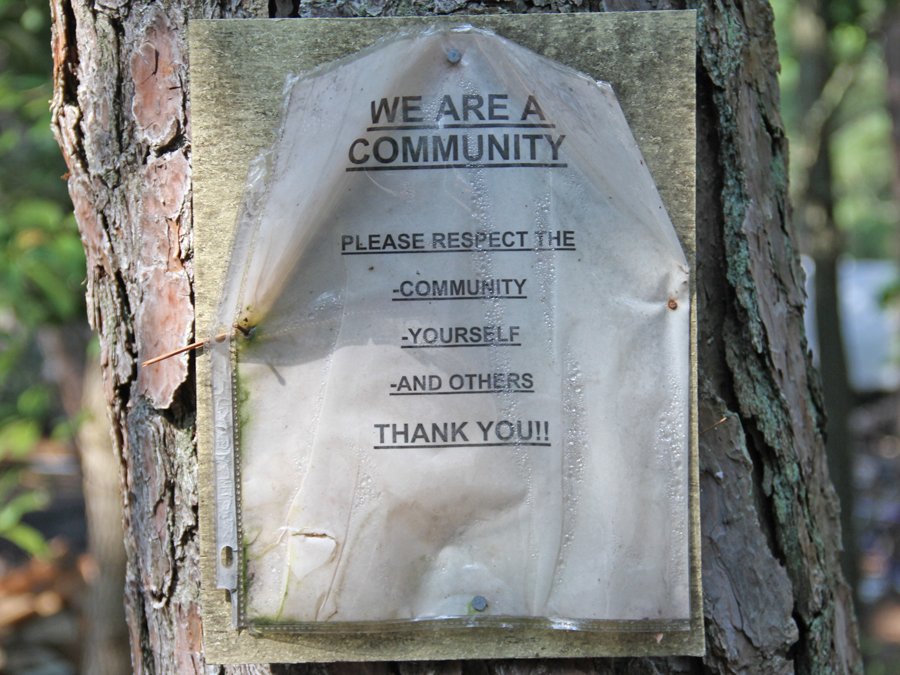
The camp is run by Reverend Steven Brigham and welcomes residents from all walks of life
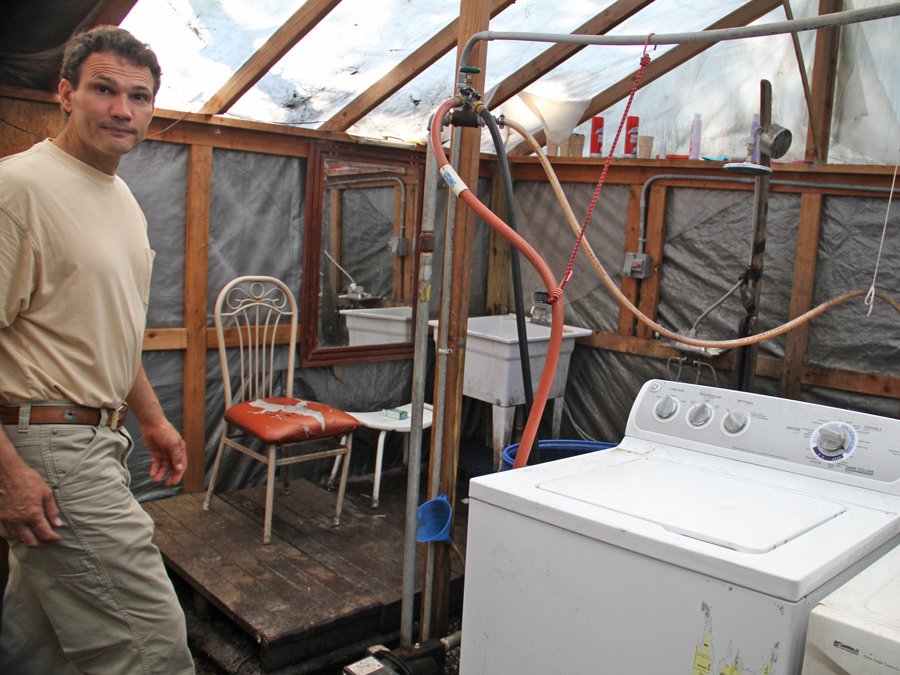
Food comes in sporadically, like these baked goods from a local grocery store
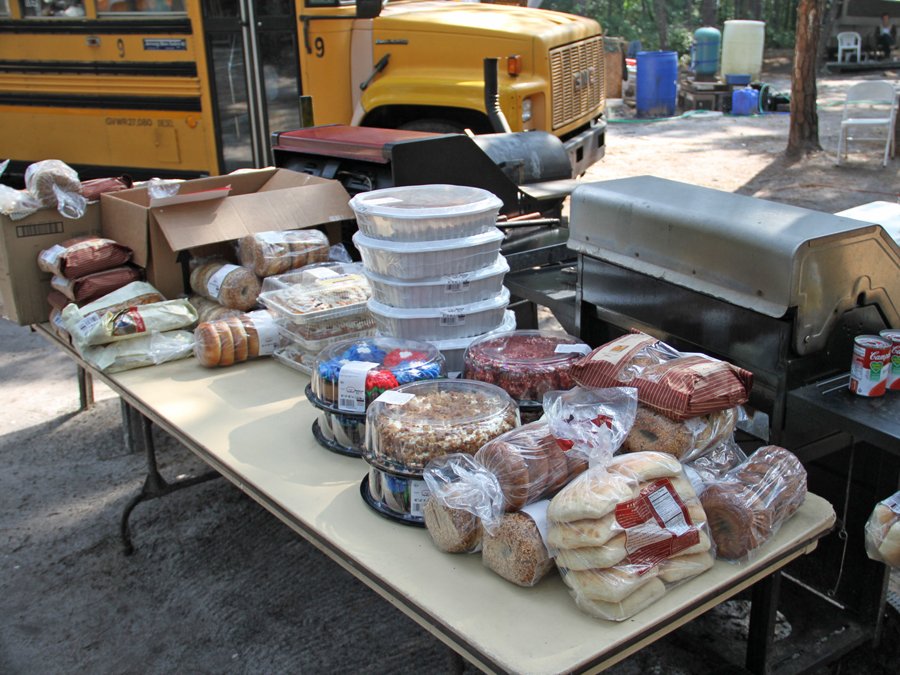
Nina is from Poland and according to Steve, moved into camp when her husband kicked her out (she’s eating borscht)
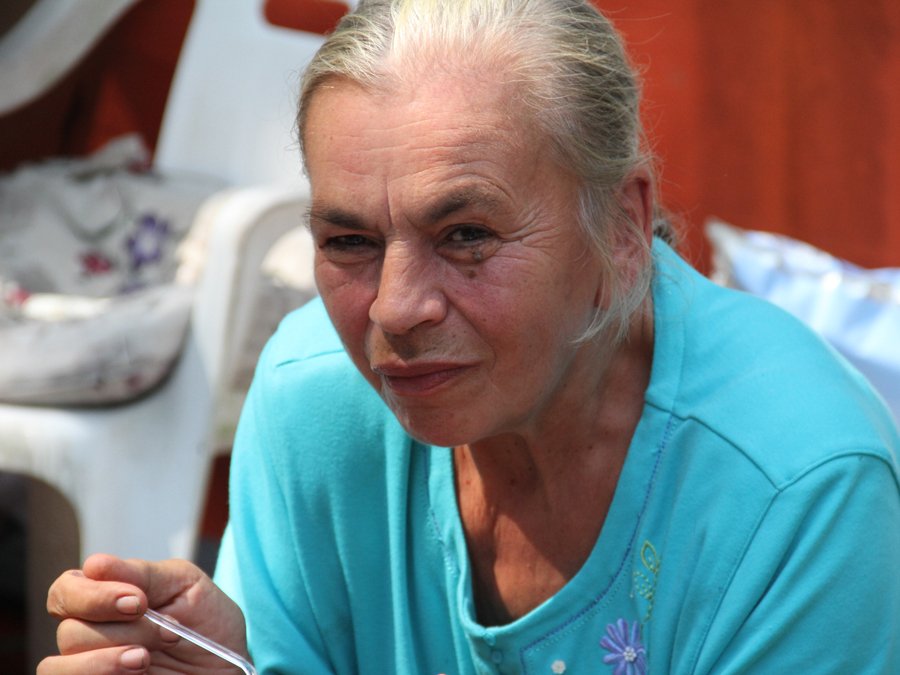
This is Nina’s shanty
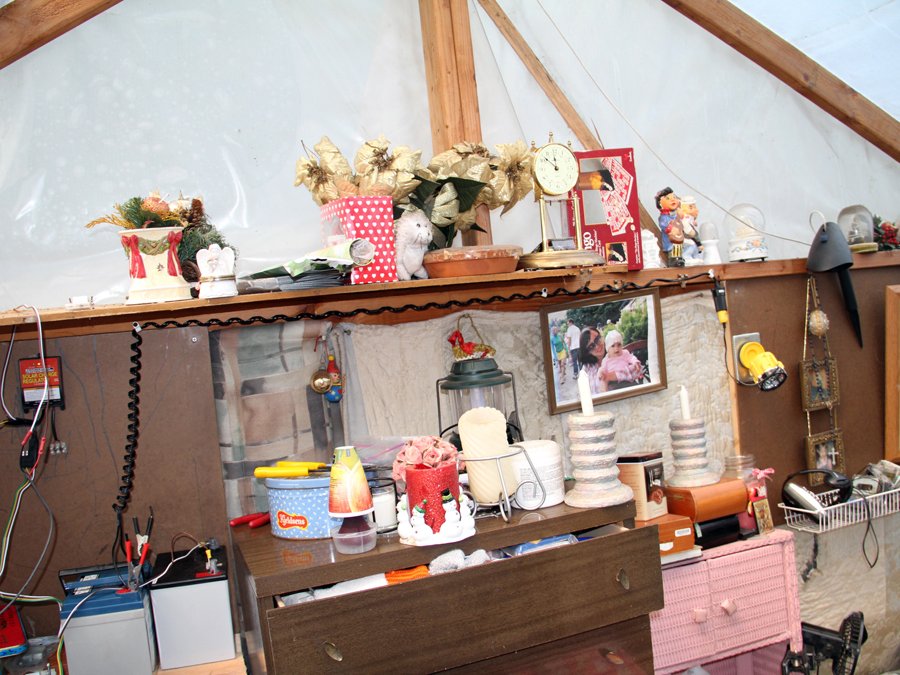
She has family in Poland that she misses very much
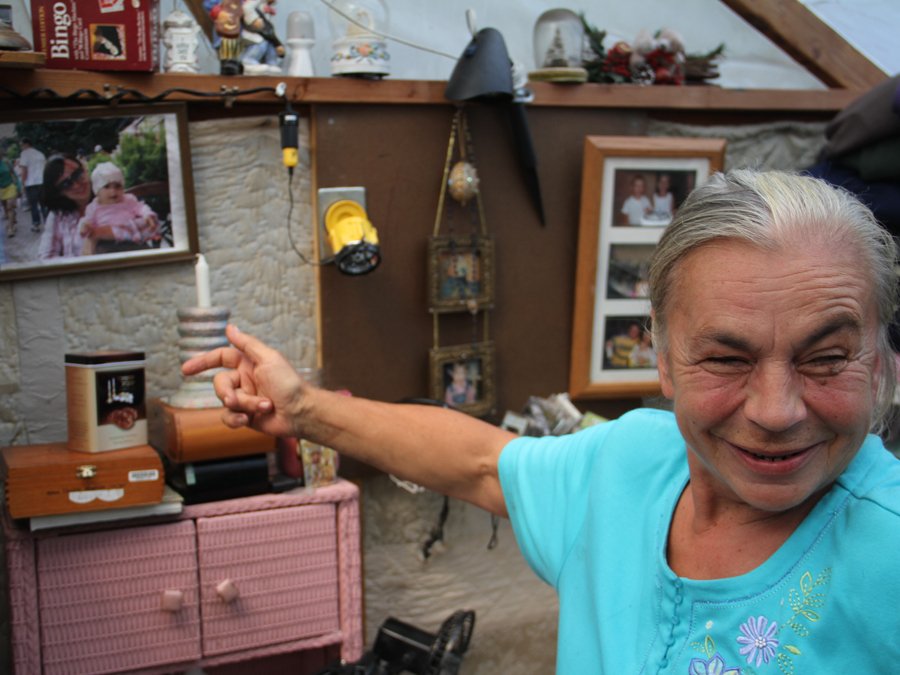
This is musician Doug Hardman who plays piano for the church services — watch a video of him playing below
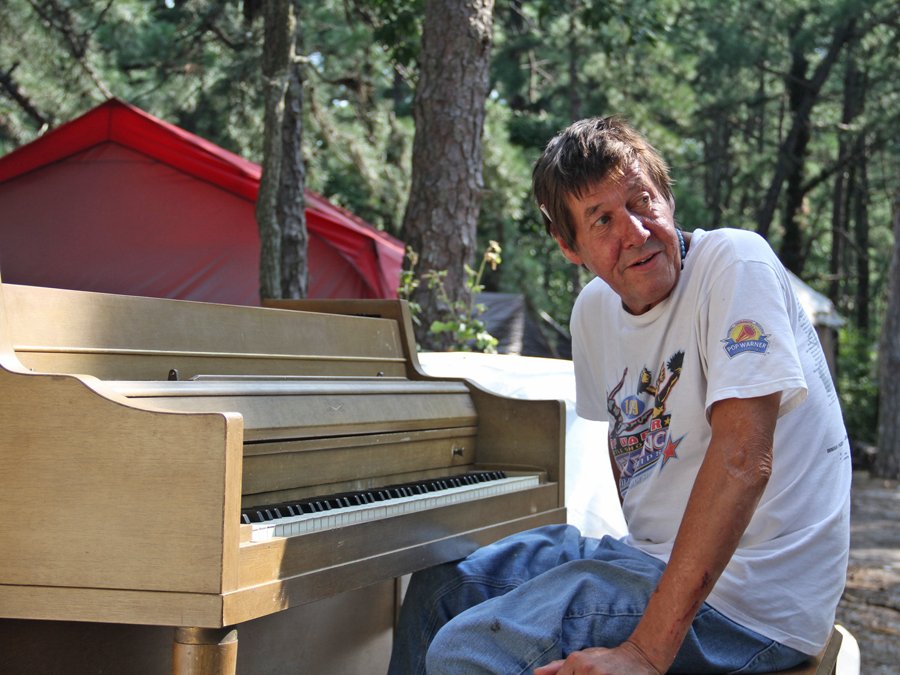
Video of Doug Hardman playing piano. http://www.youtube.com/watch?v=KuEVp3rYsr0&feature=youtube_gdata_player
Daily essentials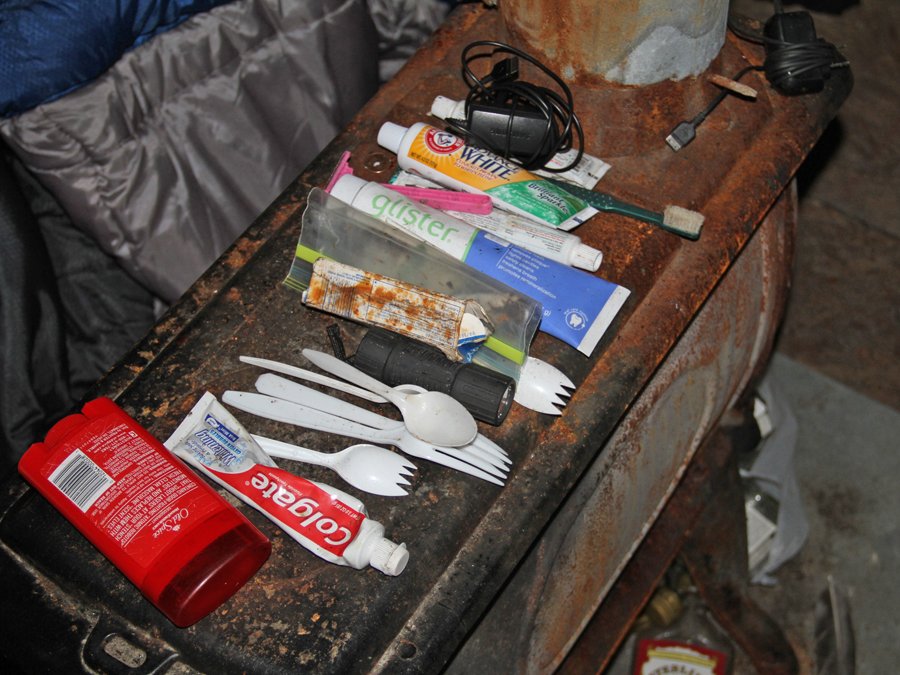
This woman and her boyfriend didn’t want their kids to recognize them online
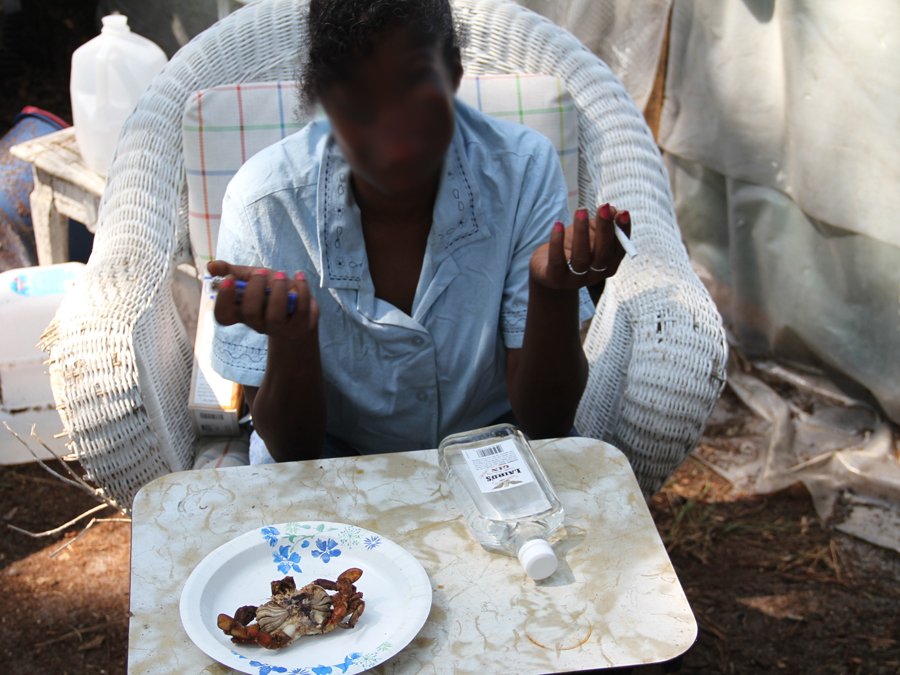
But they live here and allowed me inside
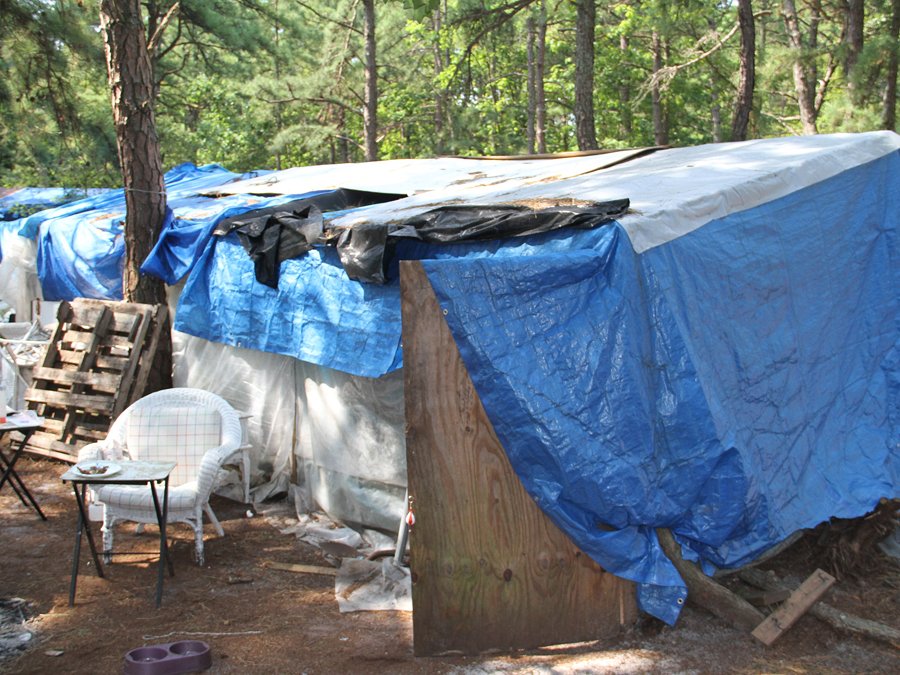
The living room
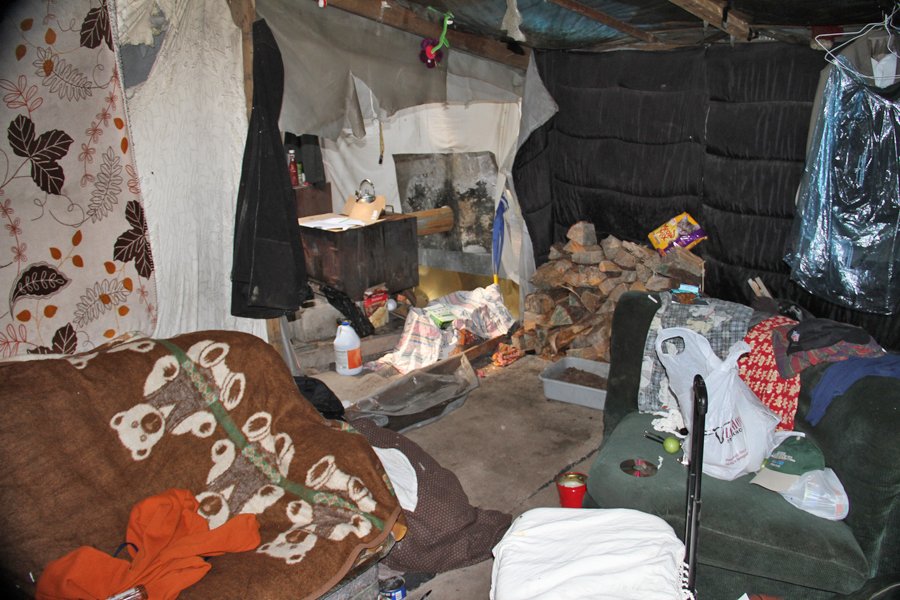
Walls insulated with old sleeping bags, the firewood supply, and a litter box filled with sand
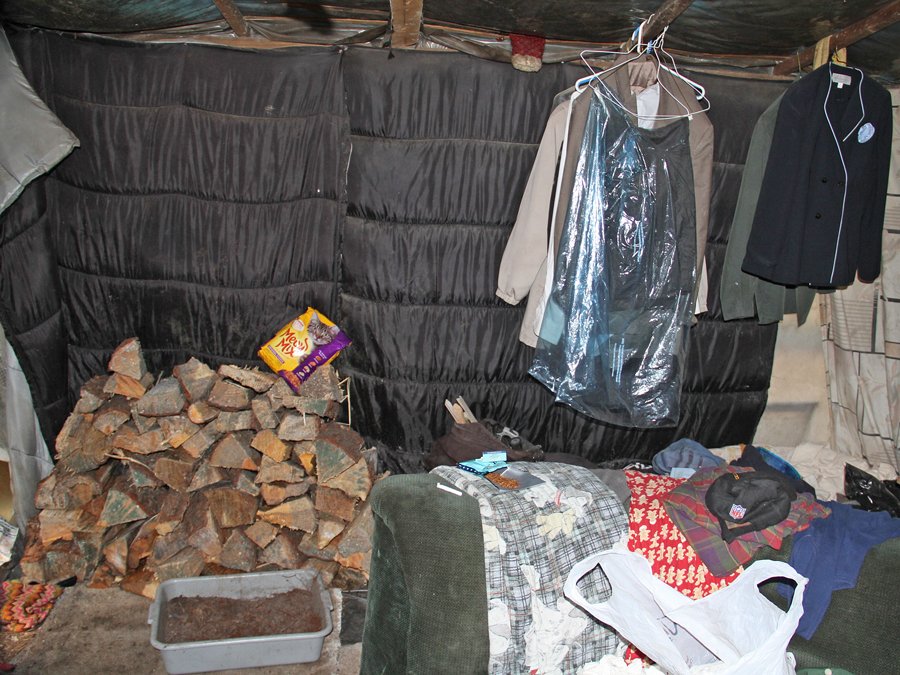
Which is why community sleep houses like this were put up – to keep everyone warm and safe in the winter
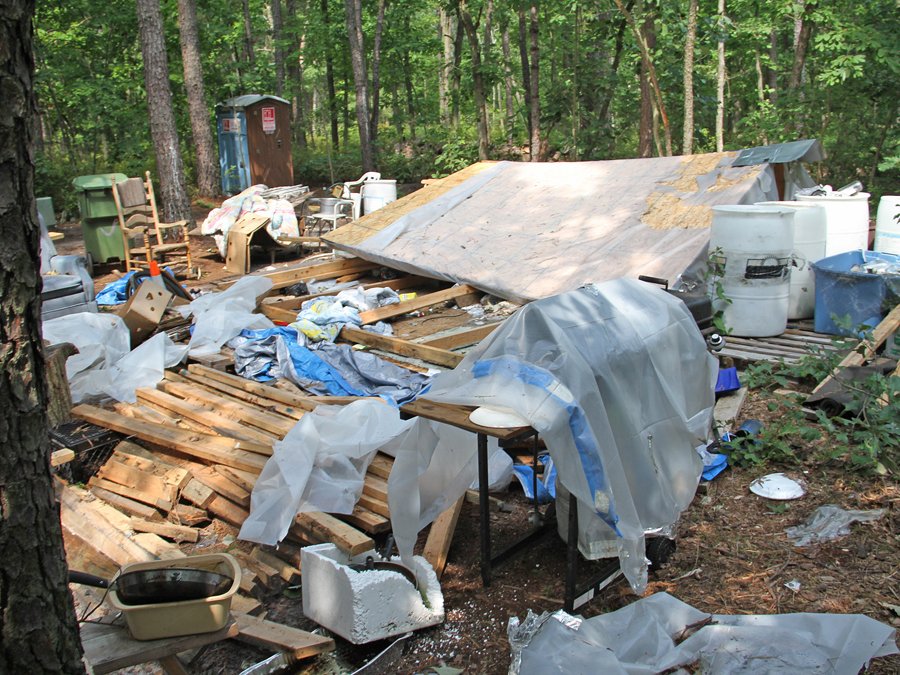
But the town came in and tore them all down
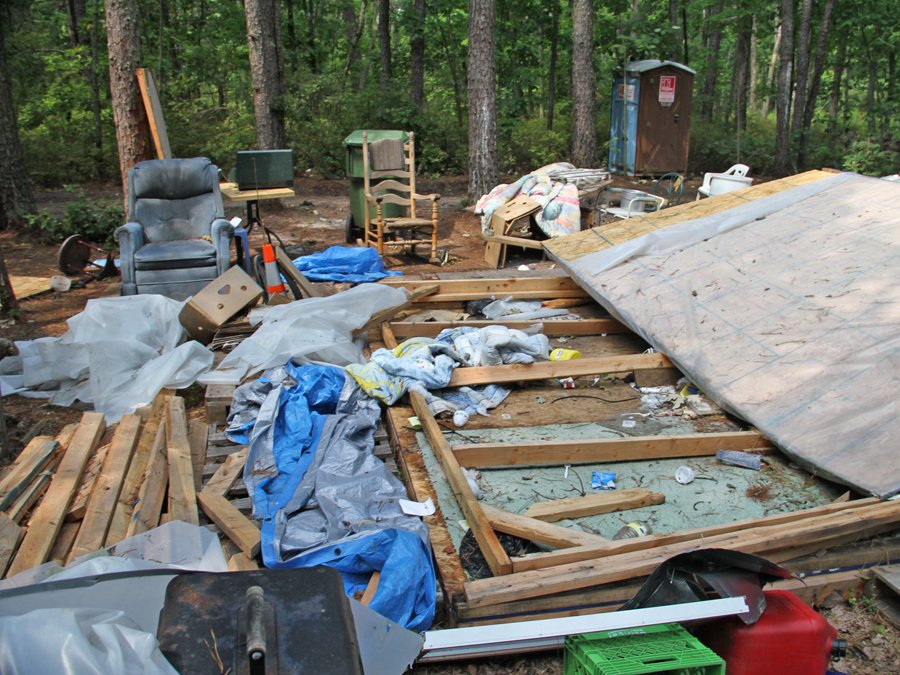
Leaving a mess and a winter filled with wood-burning fires inside everyone’s tents and shanties
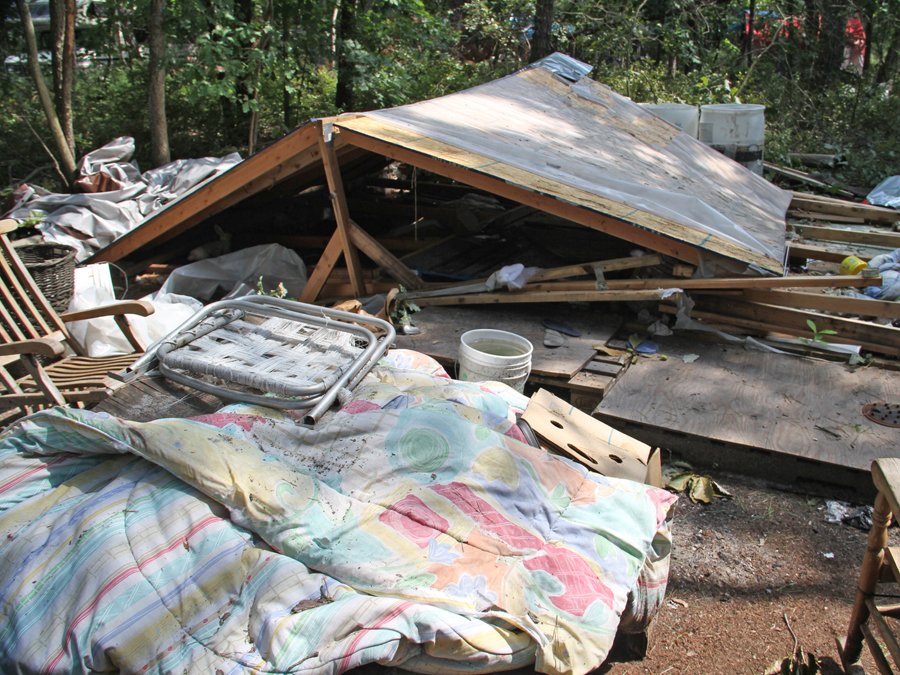
Despite their situation, people here still love their country
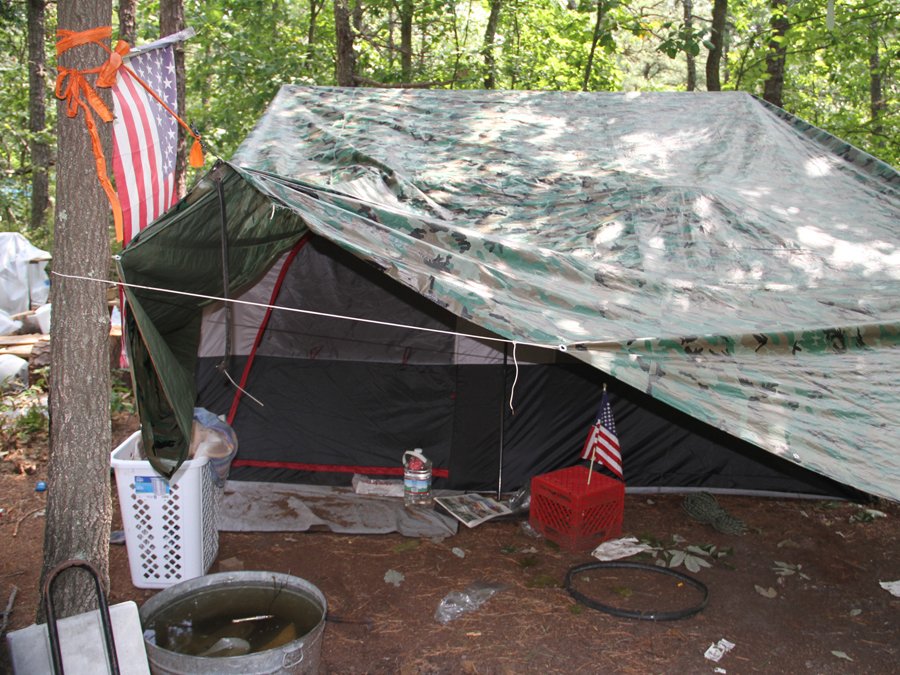


 Follow me on Twitter
Follow me on Twitter
Sorry, the comment form is closed at this time.